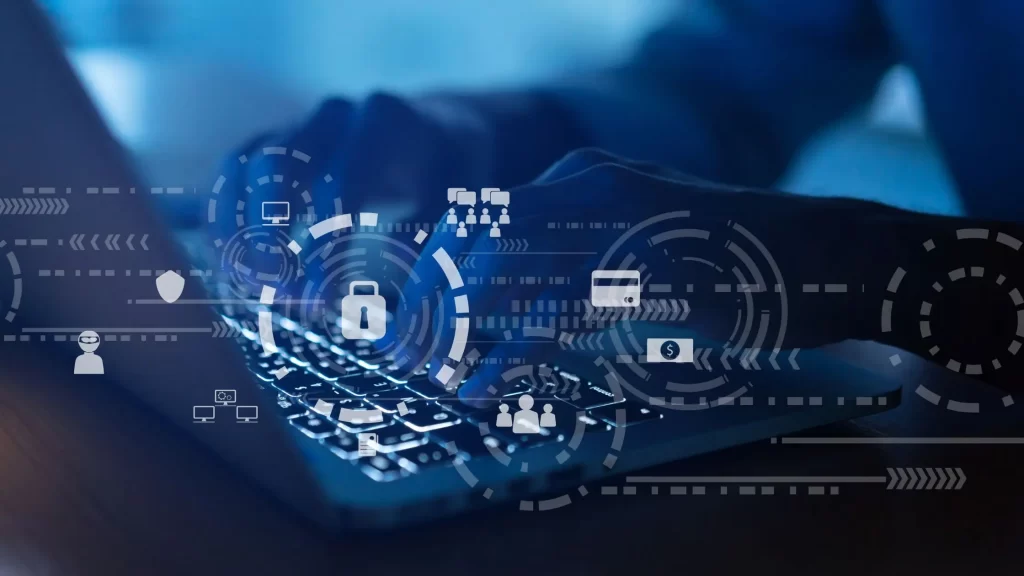As technology progresses, safeguarding sensitive information and preventing cyber threats becomes more vital. Cyber threat intelligence involves gathering, analyzing, and interpreting information about potential cyber threats to understand their nature, scope, and potential impact.
Cyber threat intelligence solutions offer organizations enhanced visibility into the current threat landscape, enabling them to stay one step ahead of potential attackers. This proactive approach allows companies to identify areas for strengthening their security posture, ultimately protecting their assets, reputation, and customers. Cyber threat intelligence is crucial for businesses to defend themselves against the continuously evolving cyber threat landscape.
Significance of Cyber Threat Intelligence
Cyber-attacks pose risks of substantial financial loss, harm to reputation, and even potential threats to human safety. Cyber threat intelligence is a crucial tool for companies, offering a means to navigate these dangers and enhance overall security measures.
Cyber threat intelligence plays a pivotal role in identifying potential threats and vulnerabilities and crafting effective strategies for mitigation. This process involves gathering insights into cybercriminals’ tactics, techniques, and procedures, empowering companies to fortify their defences. Through the implementation of cyber threat intelligence, businesses can proactively stay ahead of potential threats and uphold a resilient cybersecurity stance

Types of Cyber Threat Intelligence
Tactical Intelligence
Tactical intelligence delivers specific insights into the tactics, techniques, and procedures (TTP) employed by attackers. Tailored for those directly overseeing IT and data resource security, this type of threat intelligence outlines potential attacks an organization may face. It offers guidance on the most effective strategies for mitigation and defence. Its practical focus equips security professionals with actionable information to bolster their defences against evolving cyber threats.
Strategic Intelligence
Strategic threat intelligence clarifies information about potential cyber-attacks and their consequences for a non-technical audience, often targeted at business stakeholders. Derived from a comprehensive analysis of emerging global trends and risks, this intelligence is typically communicated through white papers, reports, or presentations. It provides a high-level overview of the threat landscape impacting a particular organization or industry, offering insights into the broader strategic implications rather than technical details.
Operational Intelligence
Operational Intelligence aggregates information from diverse sources such as social media platforms, chat rooms, antivirus logs, and historical events. Analysts utilize operational intelligence to anticipate the timing and characteristics of potential cyber-attacks. Integrating machine learning and data mining enables the automated processing of numerous data points in different languages.
For incident response and security teams, operational intelligence serves as a guide to adjust the configurations of security controls, including firewall rules, access controls, and incident detection policies. This streamlined approach minimizes response times by providing a clear investigative direction.
Technical Intelligence
Technical threat intelligence focuses on identifying indicators of compromise (IoCs) that signal an active cyber-attack. These indicators include activities like reconnaissance, exploiting vulnerabilities, and the pathways used for attacks. Its primary purpose is integral in countering social engineering attacks. Frequently mistaken for operational intelligence, the critical difference lies in the agility of technical intelligence, swiftly adapting to shifts in attackers’ tactics and exploiting new opportunities for defence.

Implementing Threat Intelligence
Cyber threat intelligence can be applied in different ways, such as:
- Recognizing Potential Cyber Threats & Vulnerabilities
Cybercriminals continuously explore new avenues to exploit system weaknesses, requiring businesses to remain vigilant. Effective vulnerability management involves routine assessments, implementing preventive measures, and ongoing monitoring for emerging threats. A comprehensive cybersecurity strategy, encompassing risk assessments, employee education, and technical safeguards like firewalls, can minimize the impact of cyber threats.
- Assisting in the Formulation of Security Procedures
Security experts play a vital role in crafting security policies and procedures for organizations. This involves establishing rules to prevent unauthorized access, developing authentication policies, and defining incident response protocols. Additionally, addressing physical security concerns, such as access control to secure areas, contributes to industry-standard security practices, safeguards sensitive data, and ensures business continuity.
- Upgrading Incident Response Capabilities
Beyond vulnerability management, enhancing incident response capabilities is equally crucial. Fast detection and response to cyber-attacks can significantly mitigate damage. A well-planned incident response plan is essential, defining roles, communication protocols, and containment procedures. Regular rehearsals and technology investments will offer real-time insights, ensuring an effective response to cyber incidents.
- Strengthening Security Posture
Taking various steps can strengthen an organization’s overall security stance. A fundamental measure involves routinely updating and patching all software and hardware to shield them from the latest threats. Regular security audits and risk assessments aid in identifying and mitigating potential vulnerabilities. Employee training and awareness initiatives play a crucial role in averting security incidents arising from human error. Implementing access controls and encryption technologies offers an additional layer of safeguard for sensitive data. Embracing a proactive security approach empowers organizations to significantly diminish the risks associated with cyber threats and safeguard their valuable assets.
- Top Cybersecurity Services
The value of cyber threat intelligence is significant for companies seeking to enhance their security stance and proactively address potential threats. Utilizing threat intelligence helps in the early detection of incidents, enabling teams to categorize high-risk activities and security events, thereby informing a targeted response. Integration into automated incident response channels enhances the predictive capability against ongoing attacks. By comprehending the actions and intentions of attackers, teams can anticipate their next steps, ultimately minimizing potential damage.
As a leading provider of cybersecurity services, Green Method offers top-notch threat intelligence and monitoring solutions. In addition to that, we also provide various cybersecurity services, including data protection, application security, endpoint security, email and browser security, human risk management, managed security services (MSS), SIEM & SOAR, OT/IoT security, network security, access management, vulnerability management and digital forensics.
Get in touch with Green Method for more information.
